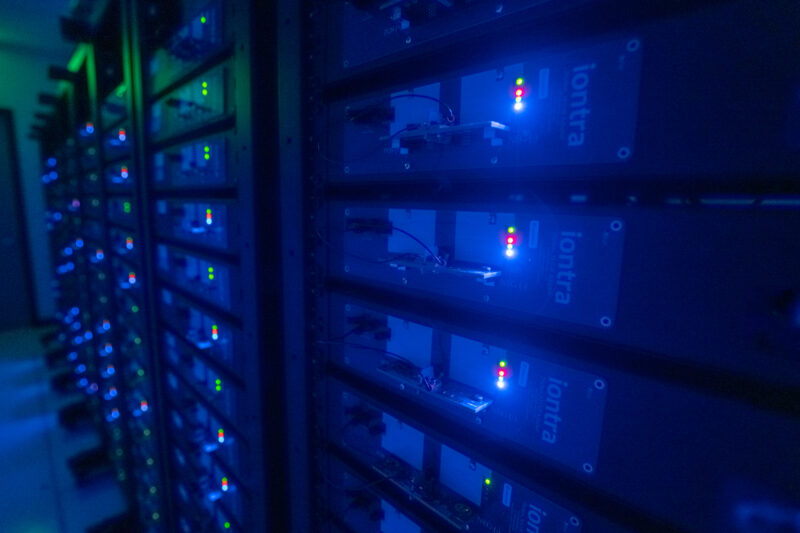When it comes to improving battery technology, most companies naturally focus on battery cells. This may seem like a “duh” thing, but we have to keep in mind that battery cells are only one part of a complex system. To safely store energy and make it rechargeable, you need to wire the individual battery cells together, build a way to cool them, and control the flow of energy in and out of the cells to prevent them from getting damaged and even catching fire.
Companies like Toyota like to tell the press about how they intend to build better battery cells that would stand up to a lot more abuse, give much better range, and last a lot longer, but that’s still just focusing on making better cells. And, listening to all of the news and commentary about battery cells, you’d think other issues like cooling and battery management are all basically solved, right?
In a recent interview with Iontra’s Chief Science Officer and co-founder, Daniel Konopka, I learned that there’s still a lot of work to be done when it comes to battery management. Denver-based Iontra is a company that focuses on both getting better performance and longer life out of battery cells through intelligent battery management without requiring changes to the design of battery cells and packs.
“We can actually detect all types of degradation,” Konopka said. “But dendrites are one of the major failure modes.”

In short, what I learned is that dendrites (little spiky crystals that grow inside lithium batteries) are behind many different kinds of battery problems. At their very worst, a dendrite that grows for long enough can pierce the battery separator, short circuiting a battery cell and causing it to catch fire. But, when they’re in their earlier stages they can cause all sorts of other problems, like lost range and power.
One big cause behind the growth of dendrites is uneven distribution of power inside the battery. When some areas inside a cell use more power and even heat up a lot faster than others, it’s like a pan on a stove that’s left on the flame with nothing cooking. As the part of the pan closest to the flame gets hotter than other areas, the pan can warp and bend, and become a lot less useful for cooking. But, if there were a way to get all parts of the pan to heat and cool evenly, you could theoretically get a pan a lot hotter overall without damaging it.
After a lot of research, Iontra figured out a fairly simple way to watch out for uneven power and heating in battery cells: tell-tale changes in voltage and current that normally don’t happen. Konopka couldn’t give me details, as revealing this information would basically be giving the company’s hard-won research findings away for free. But, Iontra knows how to get a battery management system to change what it’s doing just a little to stop the uneven use that gets dendrites to grow.
But, most companies using batteries today, including automakers, power tool companies, and micromobility manufacturers, are still doing things the old way. Battery management is better than it used to be, but moving from constant current to stepped current charging still takes a “one size fits all” approach instead of Iontra’s feedback-based approach. By tailoring charging voltage and current to what the battery cells are doing right now, it’s possible to do a lot more with less.

There are several ways a tailored, feedback-based approach to battery management can help. First, it’s possible to have smaller buffers at the top and bottom of the battery’s state of charge, allowing for more range or run-time without damaging the cells. Better performance (more power) is also possible, as the battery management can cut back at the right time to prevent damage instead of having to be super conservative to prevent damage.
More importantly, doing things to improve range and performance doesn’t have to come at the cost of degradation. It’s possible to tailor the approach to battery usage to get a balance of both increased performance and longer life, or prioritize one or the other to best fit the needs of the end user.
“We’ve seen a three to five times improvement in battery life or longevity, or a 200% improvement in both at the same time, depending on what the customer needs.” said Konopka. He also pointed out that charging with Iontra can happen without battery pre-heating, allowing for useful batteries even when cold-soaked down to 20 degrees below zero (celsius). Keep in mind that the -20C figure is just what they’ve tested to and they can likely go far lower!
The coolest thing about Iontra’s approach to battery charging is that the company doesn’t ask potential customers to take a costly leap of faith up front. Instead of signing up for the company’s full services and hoping it works out, Iontra takes an approach that proves the worth of Iontra’s technology with what they say is a relatively “low cost, no regret” approach. Companies can send in their battery cells, have Iontra run some tests on the cells, and then give some solid proof that they can deliver on better performance, be it cycle life/reduced charge time, or both.
“We usually find we can far exceed the customer’s goals.” Konopka said.
If you’re interested in seeing what Iontra can do for your company, the best thing to do is reach out and arrange for some battery cell testing. If they can exceed your company’s goals for battery cell management, you’ll know ahead of time whether it’s right for you!
This article is sponsored by Iontra.




